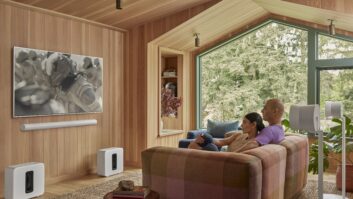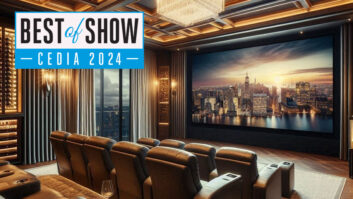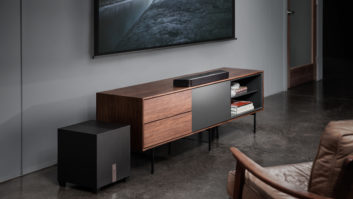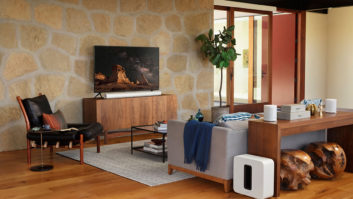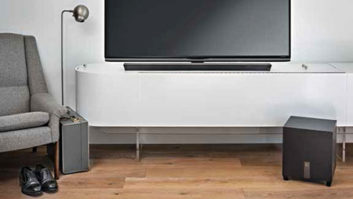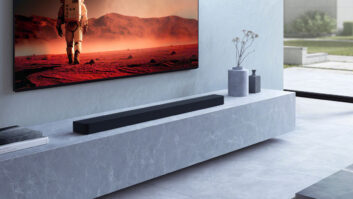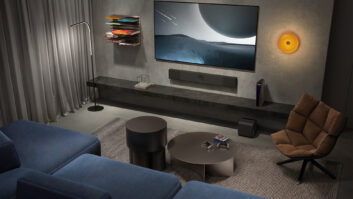Occam’s Razor says the simplest solution is the best solution. In the case of home theater, I’m not sure that’s true. We’ve seen a steady migration away from traditional 5.1 surround systems and toward soundbar solutions that are simpler but often left something to be desired when it came to sound quality. Thankfully, recent product innovations have started delivering simplicity and sound quality together, ushering in a home theater renaissance. Coupled with the Covid-19 pandemic, there’s never been a better time to help customers create a home cinema experience at a time when all the movie theaters are closed. So which is better? Soundbars or full surround systems? Let’s take a look at each one to find out.
Full Surround Sound
Let’s get this out of the way. If you’ve ever sat in a JBL Synthesis or Meridian demo room, you already know what I’m going to say. In the words of the immortal Ferris Bueller, “It is so choice. If you have the means, I highly recommend picking one up.” There’s no replacing the transcendental experience of a well-tuned, full-boat surround system. That said, they’re also wildly impractical for 90 percent of your customers. The few who can afford these types of systems seek them out and pay handsomely for them. There’s no debate to be had here, they have been and always will be the best ways to experience immersive sound. What about everyone else?
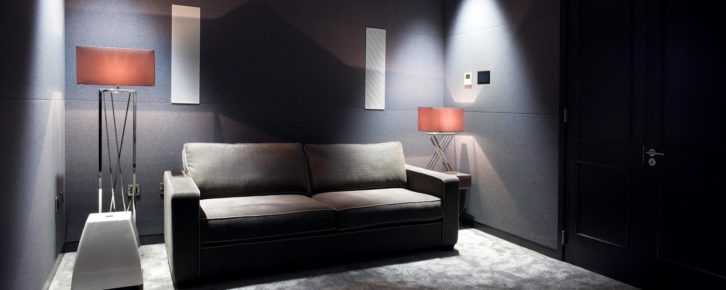
During new construction it’s easy to prewire surround speakers and subwoofers, but recent years have seen a shift away from these types of systems despite their ease of installation. Why? It’s Occam’s Razor at its finest. Customers opt for simplicity over quality, and traditional surround systems have suffered as a result. It turns out that when presented with a choice of having a few components hidden behind a TV vs. a large stack of gear, including a bulky AV receiver, many opt out of the AV rack approach. Is that bad? It’s certainly helped our industry better understand who our customers are and who they aren’t. I don’t know about you, but I’m grateful to the Geek Squad for their ability to cater to a customer base that is happy with “good enough” and doesn’t seek out our consultative approach or service-first model.
Enter Covid-19. The previously dying home theater category has been revitalized in a huge way. Integrators are hiring left and right with many customers deciding to feather the nest by creating home cinema experiences using high-quality speakers and powerful amplifiers. Our industry happens to be sitting in the catbird seat for this phenomenon (for which we’re very grateful).
Soundbar
Gone are the days when we would laugh off the home-theater-in-a-box category or only use soundbars as left/center/right-channel speakers under the TV. Today’s active soundbars by the likes of Sonos, Savant, or Leon sound great and make it easy to pair wireless surround sound as an upgrade option. Combine that with the simplicity of HDMI’s eARC audio and control protocol, and it’s readily apparent this category shouldn’t be ignored.

Soundbars are a crowd favorite and thanks to products like Leon’s Tonecase FIT, it’s easy to provide aesthetically pleasing audio/video solutions that sound great and are easy to use. Blending soundbars into the decor also boosts an integrator’s bottom line by increasing selling margins and average ticket size. Thanks to companies like Sonos, blending a soundbar into a multiroom audio system is a piece of cake with intuitive app control. In addition, the prevalence of wireless audio solutions has meant that each soundbar becomes a Trojan Horse to bring back full surround sound by adding WiSA, Wi-Fi, or Bluetooth surround speakers and subwoofers into the mix.
Final Verdict
As with most solutions in the custom installation world, it makes sense to fit the technology around the customer. If your client likes simplicity and doesn’t really care about full surround sound, start them off with a soundbar that they can add to down the road. What if they want a system that can peel the skin back from their face? That’s a full surround system with bells and whistles like Dolby Atmos and multiple subwoofers. No matter the application, there are choices galore catering to myriad customer preferences.
No matter which solution you decide to embrace (soundbar or full surround), 2020 is a great time to watch the marriage of sound quality and simplicity delivering customer happiness like never before.
